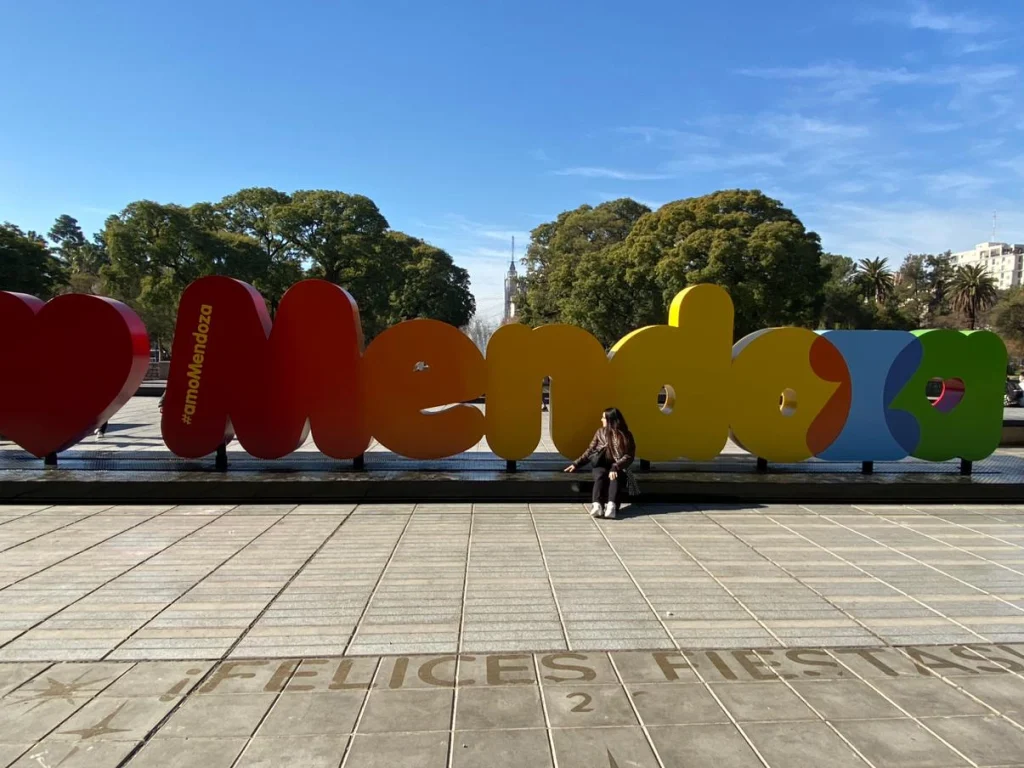Mendoza is considered one of the international wine capitals and is the province of Argentina with the largest production nationwide. In the surroundings of the capital of Mendoza, Luján de Cuyo, Valle de Uco and Maipú concentrate the largest number of wineries that it is possible to visit. A little further away, another center is San Rafael.
Some historical data
The production of wine in the lands of Mendoza was originally linked to the needs of the Catholic liturgy rather than to a commercial activity. Thus, with the construction of a church, vines were planted, as it was essential to celebrate mass. The Jesuits distinguished Cuyo wines (Mendoza and San Juan) for being “very generous and strong, capable of withstanding long journeys without being corrupted.”
Around 1853, thanks to the influence of Domingo Faustino Sarmiento (then governor of San Juan), Mendoza hired the French agronomist Michel Aimé Pouget, who was exiled in Chile, to settle in the province and begin planting varieties of grapes originating from their country such as Malbec, Cabernet, Merlot, Semillon, Sauvignon and Chardonnay. Despite the political mistreatment that Pouget received (the legislature reduced his fees considerably), he not only introduced the variety of vines that we mentioned but also prepared an entire generation of young people from Mendoza who spread the new techniques in agriculture. The history of wine grew with the contribution of numerous families who emigrated from Europe and in 1910 Mendoza had more than 1,000 wineries.
The wine experience
The most widespread grape varieties grown in the province are Malbec, Barbera, Cabernet Sauvignon and Merlot. Excellent white varieties are also grown, such as Semillon, Sauvignon Blanc and Chardonnay.
While hectares of Malbec are in decline in France, in Argentina it is becoming a “national variety”, to the point where it is itself identified with Argentine wine. This variety was introduced, as we already saw, by the Frenchman Pouget from Chile. As the Argentine wine industry discovered the unique quality of wine that could be made from the grape, Malbec rose to great prominence and is currently the most planted red grape in the country.


Maipu
It is the closest area to the city of Mendoza and is where the oldest and most traditional wineries are located.
Some of the most notable wineries are: Bodegas López: One of the oldest wineries in the region; Bodegas Trapiche: One of the largest wineries in Argentina; Bodegas Caro: A winery that stands out for its wine produced in collaboration with the French winery Château Lafite Rothschild; Tempus Alba Winery: A winery that combines the tradition of Argentine viticulture with modern winemaking techniques; and Viña el Cerno: a small boutique winery All offer tastings and a wine shop.
Luján de Cuyo
It is located a few kilometers south of Maipú and is considered the birthplace of Argentine Malbec.
Here you will find wineries such as: Catena Zapata: one of the most famous in the region and is known for its production of high-end wines; Norton: another of the most important wineries in the area; Ruca Malén: this winery stands out for its production of organic and biodynamic wines; Luigi Bosca: one of the oldest wineries in the region; and Achaval-Ferrer: specialized in the production of high-end wines.
Valle de Uco
The valley has a large number of wineries and vineyards, some of the most notable are: Salentein: famous for its high-end wines; Andeluna: known for its high-quality wines and beautiful natural surroundings, Atamisque: offers a wide variety of wines and a stunning view of the Andes Mountains; and La Azul: a boutique winery that stands out for its organic wines and its focus on sustainability.
In addition to visiting the wineries and vineyards, on the wine route in Valle de Uco you can also do various activities, such as bicycle tours, walks through the vineyards, wine tastings and local cuisine in the winery restaurants.
San Rafael
It’s also an important wine-growing area in Argentina in the south of the province.
Here are some suggestions to enjoy the experience: Suter is one of the oldest in the area and offers a tour of its facilities, as well as tastings of its wines; Jean Rivier: boutique winery is known for its production of high-quality wines; Faraón: where in addition to tasting its wines, you can tour its vineyard by bicycle; Bianchi: one of the largest in the region; La Abeja: small family winery is known for its production of organic and biodynamic wines; and Finca El Nevado: known for its high-end wine production, and offers a stunning view of the Andes mountain range from its vineyards.
In addition to the wineries mentioned, on the San Rafael Wine Route you can also find a wide variety of restaurants, accommodations and outdoor activities, such as horseback riding, hiking and bike rides.
And much more
When you visit Mendoza, you can not only visit the wineriesthe wineries, -of which we only mention a few, but you will also find different complementary activities such as horseback riding, bicycle rides, tastings and pairings. Enjoy the wine route in Mendoza!
FAQs

When to visit the wine route?
Between February and April, during the harvest season, everything simply revolves around the wine. Therefore, this is the ideal time. We have been immediately after the harvest festival and the lower costs and we still enjoy many promotions.

The Wine Route in Mendoza is an unmissable experience not only for wine lovers, which allows, while you discover the secrets of the region’s wine production, you can enjoy the Mendoza vineyards within the framework of a nature of unique beauty.



